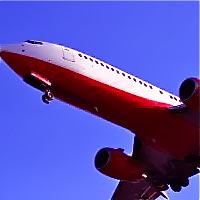Travel News
What Does It Take To Be An Air Traffic Controller?
 Ever wondered what it takes to become an air traffic controller?
Ever wondered what it takes to become an air traffic controller?
Peter recently sat down with Paul Rinaldi, president of the National Air Traffic Controller’s Association to reveal the process behind this high-stress position, and how things have changed under its newest administration.
Peter Greenberg: This past Thanksgiving, the FAA eased congestion by working with the Department of Defense to clear the way for commercial aircraft to use airspace normally reserved for the military.
Air traffic controllers were able to route commercial air traffic in restricted airspace off the the East Coast above 24,000 feet. That raises the question of air traffic control in general. You go back to 1981 when Ronald Reagan basically fired all the air traffic controllers because of a union action. He then replaced them, and everybody thought, OK everything is great. But your staffing levels right now in the year 2010, going into 2011, are not where they should be, are they?
 Paul Rinaldi: They are not. Our staffing levels have not really caught up since the imposed work rules of 2006. We’re working towards them and we are getting better, but as of right now we have far too few fully certified controllers in the system compared to the ones that have to be trained to get to that fully certified level.
Paul Rinaldi: They are not. Our staffing levels have not really caught up since the imposed work rules of 2006. We’re working towards them and we are getting better, but as of right now we have far too few fully certified controllers in the system compared to the ones that have to be trained to get to that fully certified level.
PG: I don’t think people really know how long it takes for somebody to be properly trained before you ever let them sit with somebody else in front of a board, let alone sit by themselves.
PR: The average at the busiest facilities in the country takes three to five years of full-time, on-the-job training. Once they’re certified, there’s a seasoning period for them to work on their own and it’s a three- to five-year, full-time training position.
PG: If you do the math, in a 20-year career that means 25 percent of your career is spent training.
Get the latest air travel news in the Airlines & Airports section
 PR: Yes. If you move from facility to facility and you have the basics of air traffic control down, and you’re able to develop those skills at different levels, then it is less training. But your initial training at the busiest facilities is a three- to five-year process.
PR: Yes. If you move from facility to facility and you have the basics of air traffic control down, and you’re able to develop those skills at different levels, then it is less training. But your initial training at the busiest facilities is a three- to five-year process.
PG: You once told me there is a push to put people behind those consoles when they’re really not ready yet.
PR: Yes, there was because of the shortage in staffing. Fortunately, now we’re working very collaboratively with the FAA, its administrator Randy Babbitt, and the Obama administration to address some training issues and some deficiencies to revamp the training program. We’re making sure that the developmentals—that’s what we call a controller in training—have every opportunity to be successful and the tools and the knowledge that they need to do the job day in and day out. That takes a little more time; it’s a little more tedious on the training. But when safety is first and foremost and we develop a good training curriculum, we get the best product we can for the American public.
 PG: Would you say that it is a help to you that the head guy at the FAA, Randy Babbitt, is also a pilot?
PG: Would you say that it is a help to you that the head guy at the FAA, Randy Babbitt, is also a pilot?
PR: It is a big help that Randy has been on the pilot side of the frequency. It also helps that he understands the value of the worker. We’ve had some pilots who have acted as FAA administrators, but they really didn’t understand the value of the air traffic controllers and the worker. They just thought that anybody could do the job, and that’s clearly the wrong assumption. Randy values his employees, and he really takes time to get to know them. He’s visited facilities and he’s sat down for brown-bag lunch, as he calls them, to talk about the concerns, staffing and equipment.
PG: I’m happy to hear that for a chance, and you know what? That means you and I are going to have to talk again. Let’s hope that 2011 is even better for you guys. Because if it’s better for you guys, it’s better for us guys who fly.
Listen to the complete interview on Peter Greenberg Worldwide Radio. Sign up to be an Insider (the first month is free) and get on-demand access to Peter’s weekly radio show, exclusive videos and more!
Related links on PeterGreenberg.com:
- Airlines & Airports – Air Travel section
- Senate Approves FAA Reauthorization Bill, Includes Passenger Rights, Air Traffic Upgrades
- The Trouble With Traveling Near Thanksgiving
- The Future of Travel: Solutions for America’s Transportation Problems












